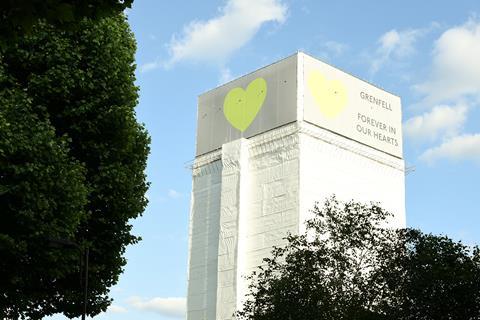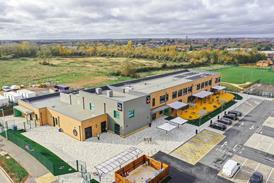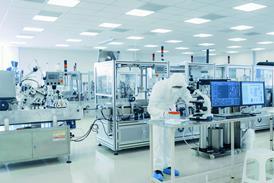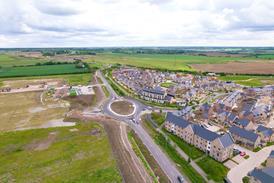The insatiable energy demands of AI-driven data centres could have a profound effect on UK energy markets. We need a joined-up conversation, says Simon Rawlinson of Arcadis.

Ahead of this week’s confirmation of the UK’s AI cooperation deals, there has been a fascinating background discussion about how the breakneck expansion of the UK’s data centre (DC) fleet will be powered up. There are proposals to collocate nuclear power stations with DCs at the former Cottam Power Station in Nottinghamshire and, on Teesside, an AI DC could potentially occupy a site that has so far been allocated to a blue hydrogen plant proposed by BP.
AI development is a vital strategic initiative. Although the UK is Europe’s leading DC location, digital investment needs to accelerate further as countries compete to develop “sovereign” AI for purposes such as security, defence and research and development.
Microsoft, OpenAI and Nvidia are bringing the technology, but the deal announced on Tuesday night is reported to be contingent on the UK government facilitating access to power. So, is this simply a planning problem solved by the AI Growth Zone designation, or is there a capacity issue too?
Carbon capture is finally taking off but, if its growth potential were to be cannibalised by AI-related development, it might not achieve the planned scale, resulting in less carbon captured and less revenue for the investors
There can be no doubt that DCs are power hungry. Even before the latest wave of investment announcements, the National Energy System Operator (NESO) forecast that UK DC energy consumption would grow by between 30 and 40 TWh by 2035 compared to the 8-10 TWh estimated for 2024.
This growth is equivalent to the generating capacity of Hinkley Point C. Meeting such a fast-growing additional demand will be a huge challenge for the UK’s already creaking energy infrastructure.
Energy decisions such as these could have wider knock-on effects. The Teesside proposal is collocated with the East Coast Cluster, the government’s flagship carbon capture and storage and low carbon energy initiative. After a slow start, the carbon capture infrastructure has reached financial close and a gas-fired power station with carbon capture is under construction. A £2bn sustainable aviation fuel (SAF) plant has also just been announced.
Carbon capture is finally taking off but, if its growth potential were to be cannibalised by AI-related development, it might not achieve the planned scale, resulting in less carbon captured and less revenue for the investors. These developments need certainty and changes like this aren’t in the plan.
How the new generation of AI-driven DCs consumes power has further implications for the UK energy system and could prompt some novel solutions. Specialist DCs used to train large language models (LLMs) for example need vast amounts of processing power from their first day of operation and are run at close to 100% capacity during training runs.
These can last for weeks or months – a dramatic change in power consumption for which the new UK power system is not designed. The emerging next generation of AI – small language models (SLMs), designed for much more targeted applications – will have similarly unpredictable, if different, implications for power grids.
Nuclear will still take time to get through regulatory clearance – even with the new streamlined process. Can the AI revolution wait?
Unpredictable power demand is driving an emerging trend, in the US and Ireland in particular, but in the UK as well, where local, dedicated power generation becomes the best option – avoiding delays to grid connections, protecting the stability of the grid itself, and avoiding overwhelming generating capacity.
The proposals announced this week for the Cottam Power Station site, to collocate DC development with a fleet of small modular reactors, is one response to the problem. Nuclear will still take time to get through regulatory clearance – even with the new streamlined process. Can the AI revolution wait?
As a result, there is growing demand for DCs powered by gas-fired electricity. Globally, Siemens has a €136bn pipeline of gas turbine orders this year, of which 60% are linked to DCs. The UK’s gas grid owner, National Gas Transmission, is already looking at connection requests.
How this global trend fits into the UK’s energy mix, and how consequential carbon emissions will be managed is another contradiction to be resolved as policy makers try to balance our AI and net-zero ambitions.
The balancing of the network is ironically an area where locally-powered DCs could play a significant role. It is well known that a grid powered by intermittent renewable sources is vulnerable to fluctuations in load and to a lack of system inertia traditionally provided by large generators. Gas-turbine powered DCs could potentially contribute stability to the network as well as selling power to the grid during peak demand periods.
Furthermore, once a DC has access to sufficient net-zero capacity, then the turbines could provide a similar, start-up capacity to new developments. This is already happening in the US. Thinking flexibly could help to make the case for DCs and for the UK’s green grid, but only if the thinking is joined up in the first place.
Huge DC opportunities at Teesworks, Cottam and Blyth point to the need for a flexible and nuanced approach to energy and net-zero policy
As an example, Arcadis is working on a revolutionary self-contained, low-carbon DC in San Jose, California. Electricity will be generated by a system of modular, natural gas-fed fuel cells.
The set-up eliminates the need for standby power generation and waste heat can be converted into cooling. Waste products of fuel cell operation, carbon dioxide and water will support high intensity farming in collocated glasshouses.
Innovative solutions like this, recognising that DC power requirements cannot simply be fed from an over-loaded grid, could help the UK to compete effectively for AI opportunity, while also delivering a sustainable, low carbon infrastructure.
Huge DC opportunities at locations across the UK point to the need for a flexible and nuanced approach to energy and net-zero policy which accommodates the strategic importance of AI and an explosive growth in energy demand. DCs are likely to be brought under the Nationally Significant Infrastructure Projects (NSIP) planning regime which means that these decisions, including energy sourcing, will be taken by national government.
There will inevitably be trade-offs. The developments announced this week highlight that these trade-offs are already being addressed. Having an open policy debate about how AI can be powered in line with demand is surely a better foundation for strategy than the lottery of planning.
Simon Rawlinson is a partner at Arcadis



























No comments yet